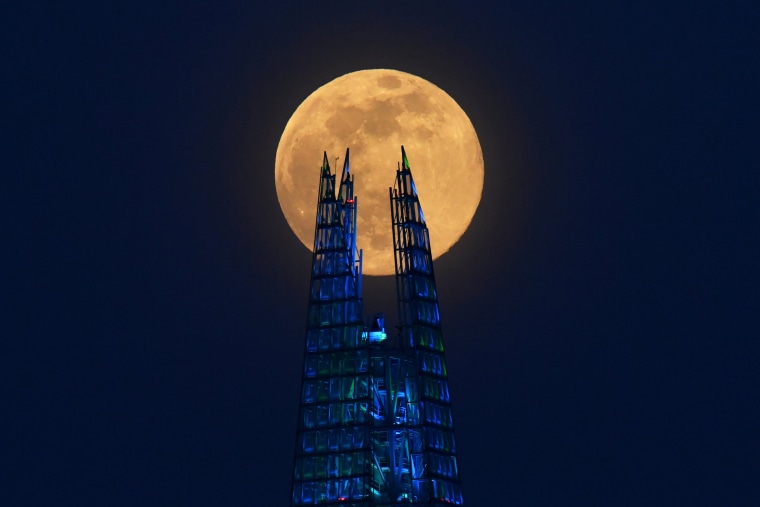Tonight's pink moon must have not gotten the memo about social distancing; the moon will be the closest to Earth today than any other day of the year, making it the largest full moon of 2020.
Granted, the moon is more than the prerequisite 6 feet (1.8 meters) away from the closest (celestial) body during the COVID-19 pandemic. Earlier today (April 7), at 2:08 p.m. EDT (1808 GMT), the moon was about 221,772 miles (356,907 kilometers) away from Earth, the closest it will be all year, according to Space.com, a Live Science sister site.
You can see the moon rise in the sky this evening (in New York, that happens at 7:05 p.m. local time). But the moon won't appear full until 10:35 p.m. EDT (0235 GMT), according to NASA. If you miss it, fret not — the moon will appear full on Wednesday night, as well.
Related: Glitzy photos of a supermoon
The pink moon is also a supermoon. It is about 0.1 percent closer to Earth than the March full moon was, making it the most super of the supermoons for 2020, NASA reported. Moreover, this pink supermoon will appear 7 percent larger than an average full moon.
The moon, however, will not actually look pink unless it's covered by an opaque pink cloud or haze.
So, why does it get a pink moniker? It's named for the pink wildflower Phlox subulata, which blossoms in eastern North America in the early springtime, Space.com reported. If you're unfamiliar with its scientific name, perhaps you'll recognize it by the common names of wild ground phlox, the creeping phlox, moss phlox and the herb moss pink.
Today's moon has one other claim to fame — it's known as the "Paschal Moon" and helps set the date for Easter. The first Sunday after the Paschal Moon is Easter, which is why Easter falls on April 12 this year.
You can see a livestream of the pink supermoon at the Virtual Telescope Project today, or watch it on Live Science.
- See spectacular lunar mission images in 3D (Photos)
- Photos: Super blood wolf moon eclipse stuns viewers
- Photos from the moon's far side! China's Chang'e 4 lunar landing in pictures
Originally published on Live Science.
